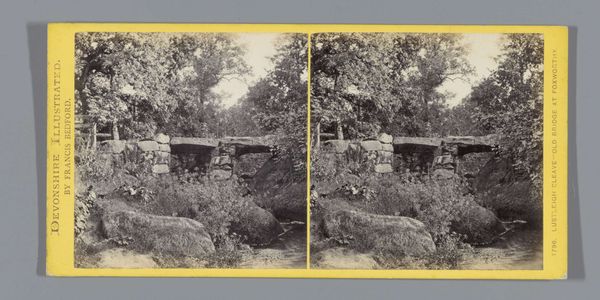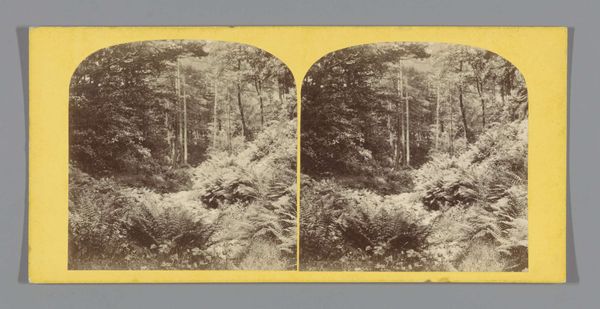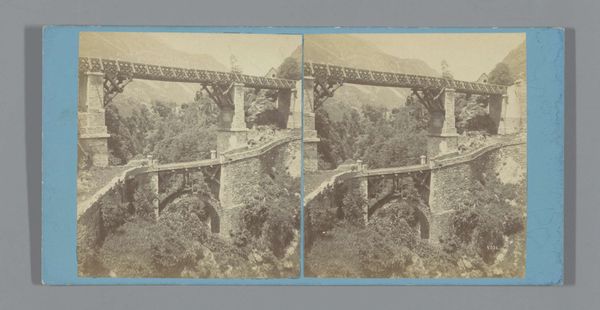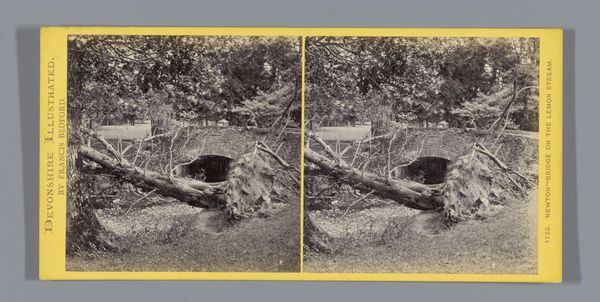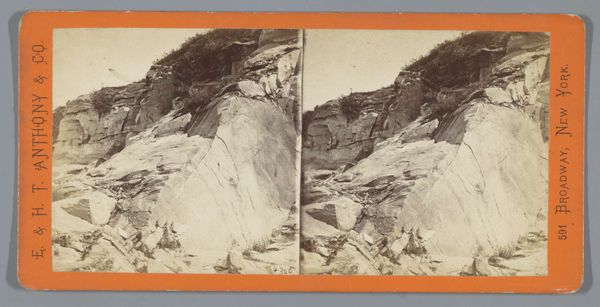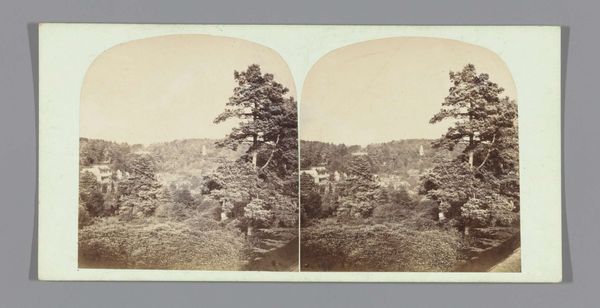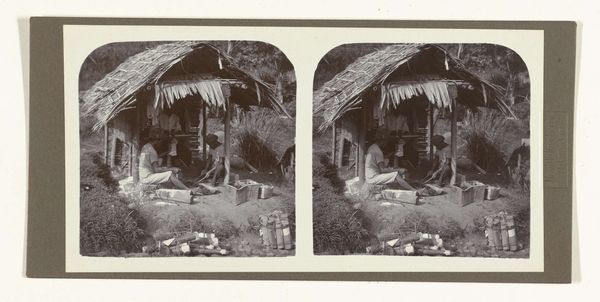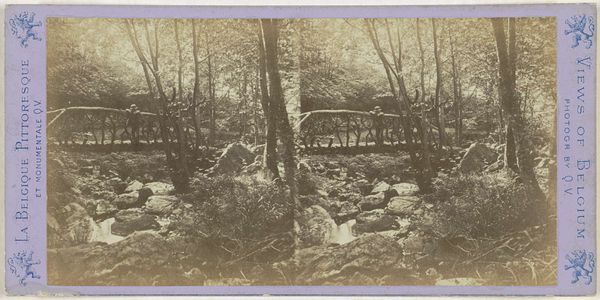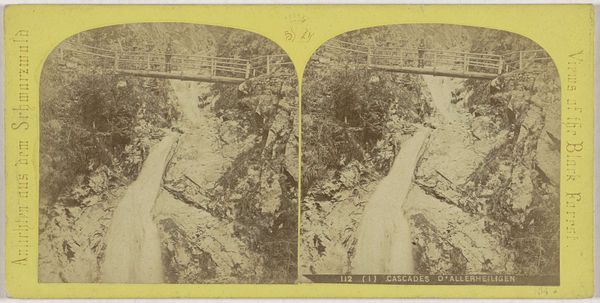
Dimensions: height 85 mm, width 170 mm
Copyright: Rijks Museum: Open Domain
J.W. Nicholson's stereoscopic card, titled "Pad naar het ravijn van Shanklin Chine," presents a dual image of a path leading into the Shanklin Chine on the Isle of Wight. This photographic approach, popular in the Victorian era, catered to a burgeoning interest in tourism and natural wonders. The Isle of Wight, with its dramatic landscapes, became a prime destination, and photography played a crucial role in shaping perceptions of these spaces. The stereoscopic format enhanced the viewing experience, offering a sense of depth and immersion that was highly valued at the time. The Chine itself, a deep gorge formed by water erosion, was transformed into a tourist attraction with constructed pathways and viewing points. In my view, the photograph not only captures the natural beauty of the site, but also reflects the Victorian drive to classify, tame and display nature for public consumption. Studying these images, along with guidebooks, maps, and travel accounts, helps us better understand the social and institutional context of tourism and visual culture in nineteenth-century Britain.
Comments
No comments
Be the first to comment and join the conversation on the ultimate creative platform.
